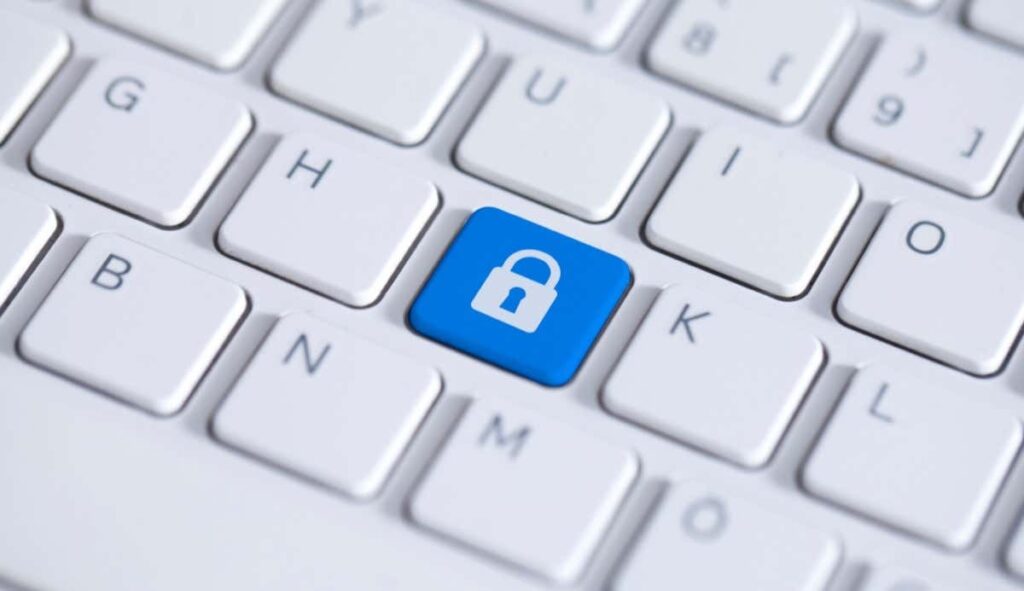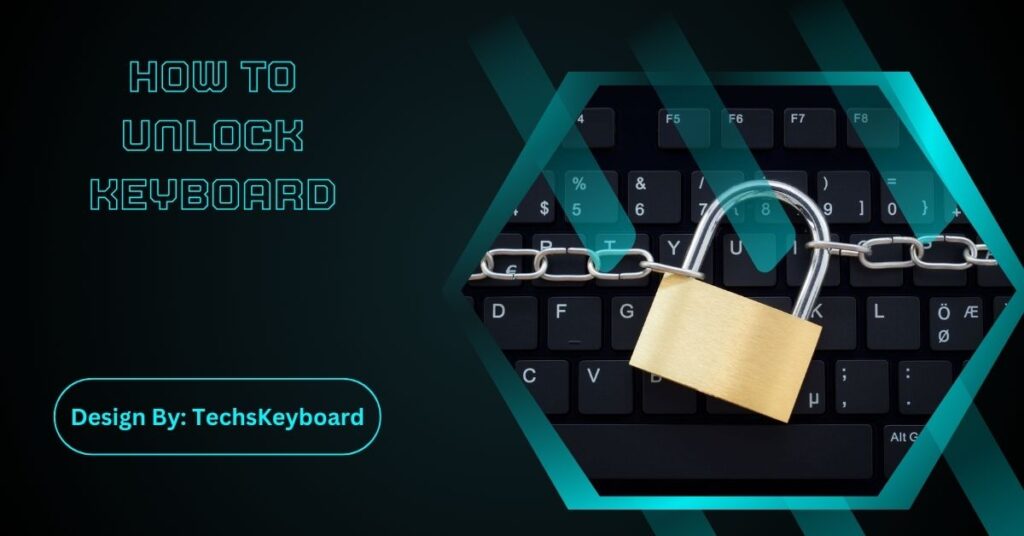Unlocking a keyboard can involve checking for physical locks, restarting your computer, updating drivers, disabling accessibility features, or using the on-screen keyboard. Follow the outlined steps to troubleshoot and resolve issues.
Have you ever found yourself in a situation where your keyboard stops working, and no matter what you do, it seems locked? Whether you are using a laptop, desktop, or Bluetooth keyboard, the frustration is real. In this article, we’ll walk you through various steps to unlock your keyboard and provide tips for future troubleshooting. Let’s get started!
How Do I Unlock My Laptop Keyboard?
Unlocking a laptop keyboard is often easier than it may seem. The issue might result from an accidental lock via software, driver issues, or even a stuck key. Here’s a quick way to start:
- Press the Function (Fn) Key + F-Lock Key: On many laptops, the keyboard can be locked accidentally by pressing the Fn key in combination with the F-Lock key (usually located in the top row).
- Check the Physical Keyboard Lock Key: Some laptops have a dedicated lock key (often on the Esc or one of the F-keys).
- Restart Your Laptop: This can reset the system and re-enable the keyboard.
- Check External Factors: If you are using an external keyboard, ensure that the cable or Bluetooth connection is secure.
Reasons for a Locked Microsoft Keyboard:

There are various reasons why your Microsoft keyboard might become locked:
- Accidental Keypresses: Sometimes, keyboard shortcuts or function keys can trigger a locked state.
- Driver Issues: Outdated or corrupted keyboard drivers may result in a malfunction.
- Sticky Keys: Windows has an accessibility feature called Sticky Keys, which can alter how your keyboard works.
- Operating System Bugs: A temporary system glitch might cause the keyboard to stop functioning.
How to Fix a Keyboard That’s Locked?
Follow these general steps to unlock your keyboard, regardless of the make or model:
- Check for Physical Locks: Look for a keyboard lock key that might have been pressed accidentally.
- Restart the Computer: A quick restart can often resolve any temporary glitches or malfunctions.
- Update Keyboard Drivers: Navigate to Device Manager, find your keyboard, and check for any available driver updates.
- Disable Sticky Keys or Filter Keys: These are Windows accessibility features that sometimes cause confusion.
Windows 7 and Windows 10 Users
- In Windows 7, go to Control Panel > Ease of Access > Make the keyboard easier to use. Uncheck Sticky Keys and Filter Keys if they are enabled.
- In Windows 10, navigate to Settings > Ease of Access > Keyboard. Toggle off Sticky Keys, Filter Keys, and Toggle Keys.
Also Read: Laptop Keyboard Not Working – Here’s How to Fix It!
How Do I Unlock My Bluetooth Laptop Keyboard?
Bluetooth keyboards present their own set of challenges when locked. Here’s how you can unlock one:
- Check Bluetooth Connectivity: Ensure that your Bluetooth is turned on, and the keyboard is paired with your laptop.
- Replace the Batteries: If the keyboard is battery-operated, dead or weak batteries could cause it to stop functioning.
- Re-Pair the Keyboard: Disconnect the Bluetooth connection and re-pair the keyboard to the laptop.
- Update Bluetooth Drivers: Outdated drivers can interfere with Bluetooth connectivity.
Step-by-Step Guide to Unlocking a Microsoft Keyboard:

If you’re using a Microsoft keyboard and it’s locked, follow these steps to unlock it:
Step 1: Check for Physical Locks
- Some keyboards, particularly on laptops, have a lock key that disables the keyboard. Look for it on the Esc key, F-lock key, or another function key.
- If using an external keyboard, unplug and replug it or check the wireless connection.
Step 2: Restart the Computer
A simple reboot often clears any software glitches causing your keyboard to be locked.
Step 3: Update Keyboard Drivers
- Press Windows Key + X and select Device Manager.
- Scroll down to Keyboards and click to expand.
- Right-click your keyboard and select the Update driver.
- Follow the prompts to update the drivers.
Step 4: Use the Accessibility Options
Go to Settings > Ease of Access > Keyboard and check that the accessibility features like Sticky Keys or Filter Keys are turned off.
Step 5: Try Using the On-Screen Keyboard
If your physical keyboard is locked, you can use the on-screen keyboard for temporary use:
- Open Settings > Ease of Access > Keyboard.
- Toggle on Use the On-Screen Keyboard.
Step 6: Reset the Keyboard Settings
- Go to Settings > Devices > Typing.
- Scroll down and click Advanced keyboard settings.
- Reset to the default settings if anything seems out of order.
How to Unlock Keyboard – Easy tips!
To unlock your keyboard, start by checking if the Num Lock, Scroll Lock, or Fn keys are activated, as these can limit functionality. For laptops, try pressing Fn + F (function key) combinations to reset. Restarting your computer can resolve temporary glitches.
If using a wired keyboard, replug it into a different USB port. For wireless models, change batteries or re-pair the Bluetooth connection. Updating or reinstalling the keyboard driver may also help.
How To Unlock Keyboard On Laptop?
If your laptop keyboard suddenly stops responding, it might be locked due to a shortcut key, software issue, or system setting. To unlock it, try pressing Fn + Num Lock or Fn + F6 depending on your laptop model. Also, check if Filter Keys is enabled in Windows settings and disable it. Restarting the device or updating keyboard drivers can also help. These simple steps usually restore normal function without requiring technical support.
Additional Tips and Troubleshooting:
- Clean the Keyboard: Sometimes, dust or debris can cause certain keys to stick or malfunction. Clean your keyboard regularly.
- Test with an External Keyboard: Connect an external keyboard to check if the issue persists. If the external keyboard works, the issue might be with the laptop’s keyboard hardware.
- Run System Diagnostics: Use tools like Windows Memory Diagnostic or System File Checker to check for any hardware or software malfunctions.
FAQs:
1. How can I get my laptop’s keyboard unlocked?
Press the Function (Fn) key with the F-Lock key or check for a physical lock key. Restarting your laptop or checking external factors can also help.
2. What are common reasons for a locked Microsoft keyboard?
Accidental keypresses, outdated drivers, Sticky Keys, or operating system bugs can lead to a locked Microsoft keyboard. Addressing these issues usually resolves the problem.
3. How do I fix a keyboard that’s locked?
Check for physical locks, restart the computer, update keyboard drivers, and disable Sticky or Filter Keys under Windows accessibility options to resolve a locked keyboard.
4. How can I get my laptop’s Bluetooth keyboard unlocked?
Ensure Bluetooth connectivity is active, replace weak batteries, re-pair the keyboard with your laptop, and update Bluetooth drivers to resolve issues with a locked Bluetooth keyboard.
5. What can I do if my keyboard settings are reset?
Go to Settings > Devices > Typing, and reset the keyboard settings. If the problem persists, you might need to update drivers or restart your system.
6. How do I use the on-screen keyboard when the physical one is locked?
Navigate to Settings > Ease of Access > Keyboard, then toggle on the on-screen keyboard option to continue using your computer while troubleshooting your physical keyboard.
Conclusion:
Unlocking a locked keyboard, whether it’s on a laptop, desktop, or Bluetooth device, can usually be resolved through a combination of steps like checking physical locks, restarting your system, or updating drivers. Disabling accessibility features such as Sticky Keys and using the on-screen keyboard can also help. By regularly maintaining your keyboard and updating drivers, you can avoid future lockouts and keep your system functioning smoothly.


